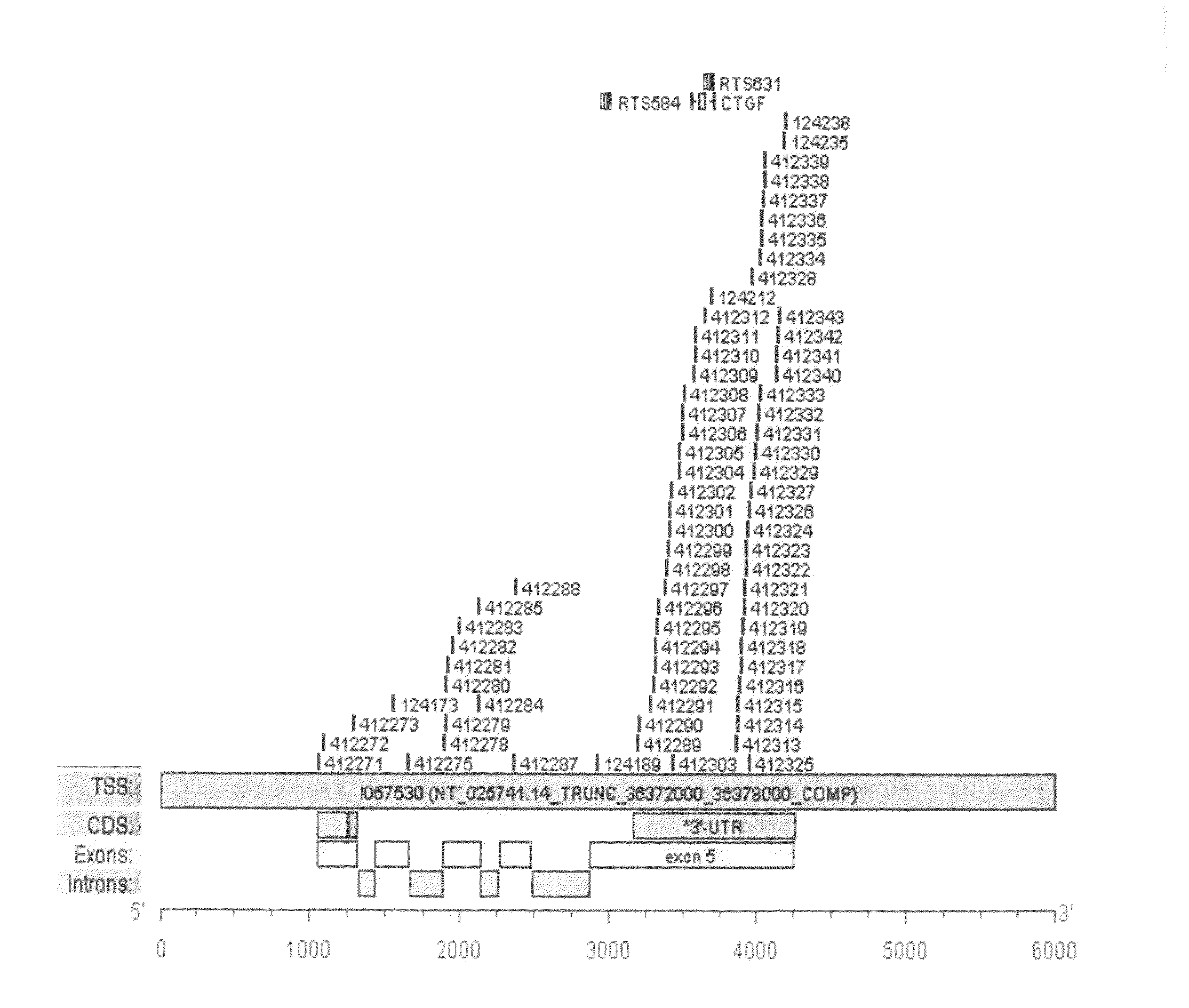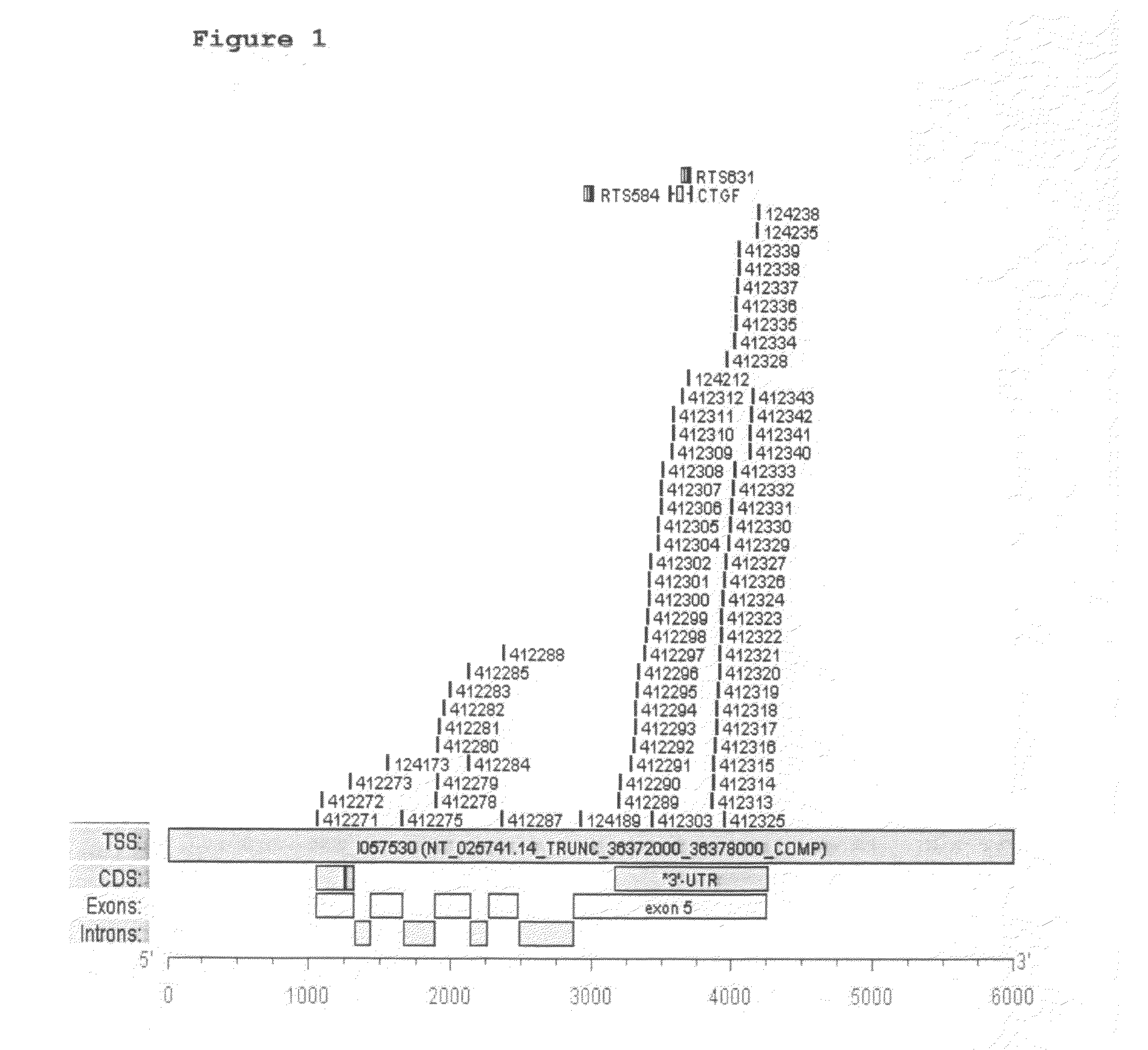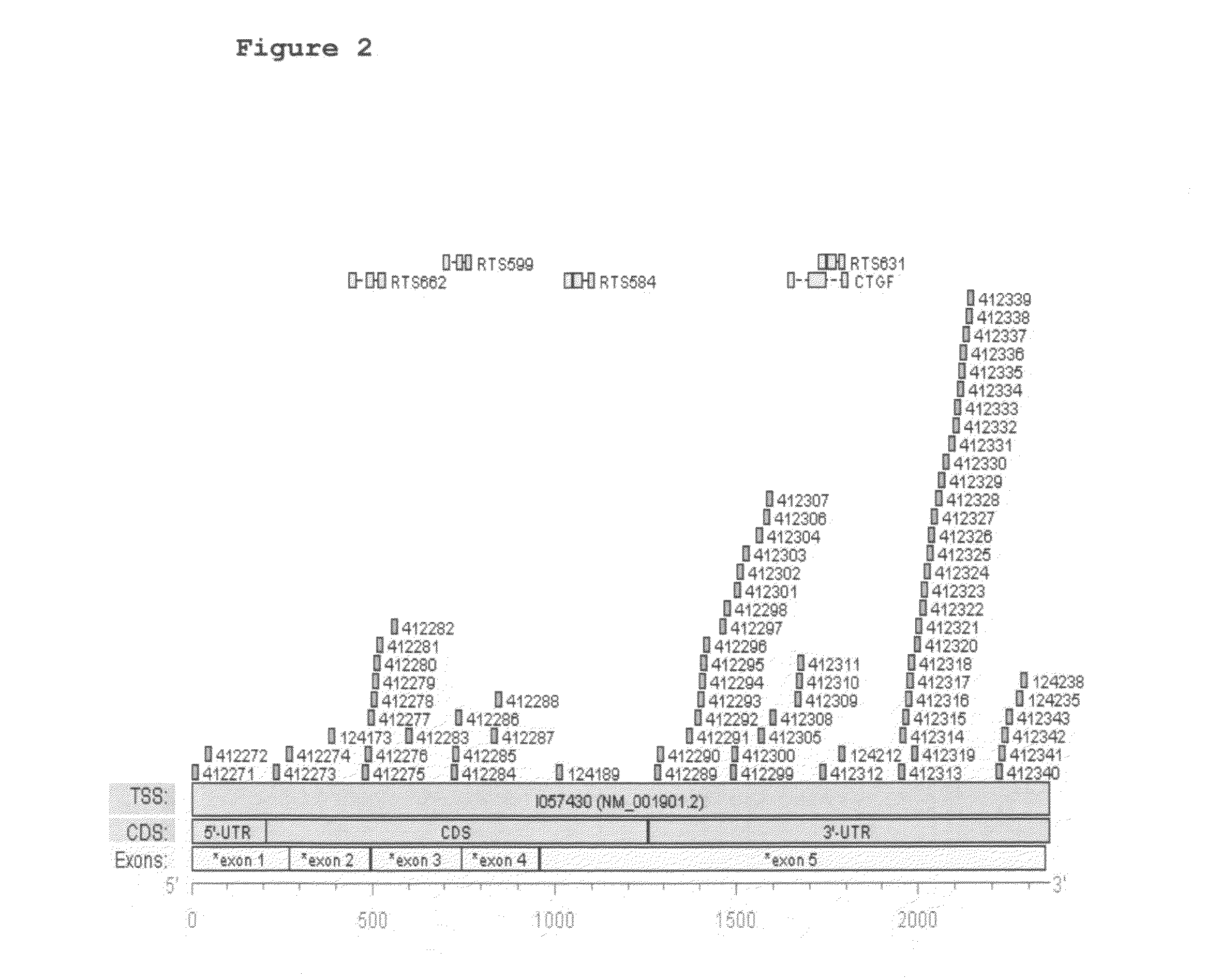Antisense oligonucleotides directed against connective tissue growth factor and uses thereof
a technology of antisense and oligonucleotide, which is applied in the field of new antisense oligonucleotides, can solve the problems of enormous magnitude, no known therapeutic agents that effectively inhibit the synthesis of connective tissue growth factor, and permanent functional loss, and achieve the effects of reducing the expression of ctgf and col1a2 mrna, and reducing the deposition of collagen in the skin
- Summary
- Abstract
- Description
- Claims
- Application Information
AI Technical Summary
Benefits of technology
Problems solved by technology
Method used
Image
Examples
example 1
Cell Culture and Antisense Compounds Treatment
[0251]The effects of antisense compounds on the level, activity or expression of CTGF nucleic acids can be tested in vitro in a variety of cell types. Cell types used for such analyses are available from commercial vendors (e.g. American Type Culture Collection, Manassus, Va.; Zen-Bio, Inc., Research Triangle Park, N.C.; Clonetics Corporation, Walkersville, Md.) and cells are cultured according to the vendor's instructions using commercially available reagents (e.g. Invitrogen Life Technologies, Carlsbad, Calif.). Illustrative cell types include, but are not limited to, HepG2 cells, Hep3B cells, and primary hepatocytes.
example 2
In Vitro Testing of Antisense Oligonucleotides
[0252]Described herein are methods for treatment of cells with antisense oligonucleotides, which can be modified appropriately for treatment with other antisense compounds.
[0253]In general, cells are treated with antisense oligonucleotides when the cells reach approximately 60-80% confluency in culture.
[0254]One reagent commonly used to introduce antisense oligonucleotides into cultured cells includes the cationic lipid transfection reagent LIPOFECTIN® (Invitrogen, Carlsbad, Calif.). Antisense oligonucleotides are mixed with LIPOFECTIN® in OPTI-MEM® 1 (Invitrogen, Carlsbad, Calif.) to achieve the desired final concentration of antisense oligonucleotide and a LIPOFECTIN® concentration that typically ranges 2 to 12 μg / mL per 100 nM antisense oligonucleotide.
[0255]Another reagent used to introduce antisense oligonucleotides into cultured cells includes LIPOFECTAMINE® (Invitrogen, Carlsbad, Calif.). Antisense oligonucleotide is mixed with LI...
example 3
RNA Isolation
[0258]RNA analysis can be performed on total cellular RNA or poly(A)+mRNA. Methods of RNA isolation are well known in the art. RNA is prepared using methods well known in the art, for example, using the TRIZOL® Reagent (Invitrogen, Carlsbad, Calif.) according to the manufacturer's recommended protocols.
PUM
| Property | Measurement | Unit |
|---|---|---|
| Tm | aaaaa | aaaaa |
| diameter | aaaaa | aaaaa |
| diameter | aaaaa | aaaaa |
Abstract
Description
Claims
Application Information
 Login to View More
Login to View More - R&D
- Intellectual Property
- Life Sciences
- Materials
- Tech Scout
- Unparalleled Data Quality
- Higher Quality Content
- 60% Fewer Hallucinations
Browse by: Latest US Patents, China's latest patents, Technical Efficacy Thesaurus, Application Domain, Technology Topic, Popular Technical Reports.
© 2025 PatSnap. All rights reserved.Legal|Privacy policy|Modern Slavery Act Transparency Statement|Sitemap|About US| Contact US: help@patsnap.com



